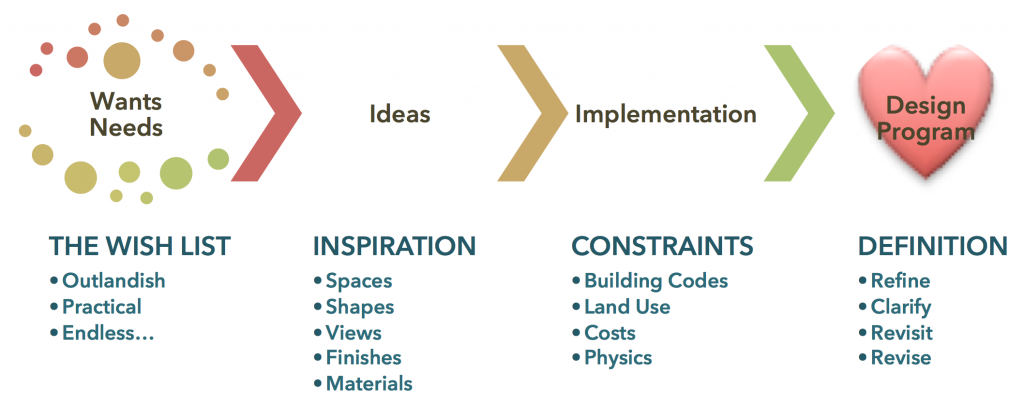Energy Efficient Stuff , Net Zero Energy Homes
Sustainability Is Not A One-Size-Fits-All Label
 I was going to write today about the range of energy efficient and sustainable housing standards and programs that are offered by organizations. But I got sidetracked by an article by Allison Bailes on his Energy Vanguard blog.
I was going to write today about the range of energy efficient and sustainable housing standards and programs that are offered by organizations. But I got sidetracked by an article by Allison Bailes on his Energy Vanguard blog.
In it, he follows up on some harsh criticism of some work done by Alex Wilson of Environmental Building News. Alex had done some number crunching on insulation types and global warming potential (GWP) for an article in 2010. As Allison notes, Alex’s work on this study focussed on a single scenario, with a single material. Which, like anything else, doesn’t exist in the real world. The house exists as a system, in an infrastructure of systems and so, a whole raft of variables need to be considered to determine what’s effective in a given climate with a given set of energy sources, for example.
I’m not going to re-write or paraphrase either Allison’s or Alex’s articles here. If you’re geeky enough to care about the sordid details, you’ll do better to read those yourself. What I do want to point out is that there are no silver-bullet solutions to sustainability, and there are complicated challenges to determining what makes a material, a system, a house, a neighbourhood, a city, sustainable.
I have a couple of f’r instances myself (surprise, surprise).
A heat pump looks/feels/sounds like the best option for a retrofit heating system on a house with an older mid-efficiency oil furnace in Nova Scotia. But not really.
It depends.
Our electricity mix is primarily coal + fuel oil. The emissions are ± 1.1 kg/kWh. The generation and transmission losses across the grid means that less than 30% of the energy available in the fuel is actually usable electricity. This puts a high-efficiency single-processor heat pump at the same efficiency as a new code-compliant oil furnace. So in the big picture immediately, this is not necessarily the best solution in terms of GHG emissions with our current generation mix, but it does anticipate a higher renewables component supplied to the grid.
If, instead, we were looking at a new build, Net Zero Energy Ready project, then it’s a good long-term solution that will drop emissions dramatically, regardless of the generation mix, once the house has site-generated power.
If that new build has spray foam as one of it’s components, we need to know a lot about that material and it’s broadly defined lifecycle cost is to make a fully informed decision about whether it is a sustainable choice for this region with this energy mix or not. That’s a challenge. Who can/wants to crunch those numbers and who can/wants to pay for those numbers to be crunched? What parameters are we going to use? Who decided those?
There’s a great tool that I’ve used for crunching those numbers. The Athena Sustainable Materials Institute has suite of lifecycle cost assessment (LCA) software tools that allows you to look at whole assembly or component LCA. All of these tools are FREE to use. Use ’em and make good choices.
The good news is that you really only have to do these kinds of calculations and analysis for each type of material in your own climate/utility service area for the specific scenarios you will be confronted with. For most designers/builders that’s going to be enough. It’s when you offer your services across several climate and/or utility service areas it’s more challenging.
Please sign up for our newsletter to get all the good stuff.
Energy Efficient Stuff , Low Energy Housing , Net Zero Energy Homes , Sustainable Home Design
What Do You Get When You Mash Up A Refrigerator Box, A Trailer, A Sleeping Bag, and a Thermos?

Notice the steep pitched metal roof. The snow has slid and/or melted off the peak, but there’s still a deep blanket on the rest of the roof, meaning there’s great air sealing and a lot of insulation under it!
You get a Tiny House that works in cold climates!
In 2015, I did a presentation for the NS Tiny House Movement Meet Up group.
I flagged some of the issues I saw in terms of cold climates and energy efficiency and how to solve them for tiny houses.
Here’s the presentation. I’m planning on expanding it and adding a couple of case studies, along with a voice over and an interview or two.
Let me know what information you’d like to have added!
Designing a house or a renovation to an existing house is a complicated process, with many different aspects to consider.
In the broadest sense, it is moving from idea to the plans for the finished project.
All sorts of elements need to be considered, researched and evaluated for every decision to make the design attainable.
Add the elements of sustainability into the mix, just to make it a little more complicated.
The process is really a spiral that loops back and forth, where ideas, obstacles, options, and solutions in one area affect ideas, obstacles, options, and solutions in any other area. Design is about finding the connections and synergies between things that seem like they couldn’t possibly be related.







Leave A Comment